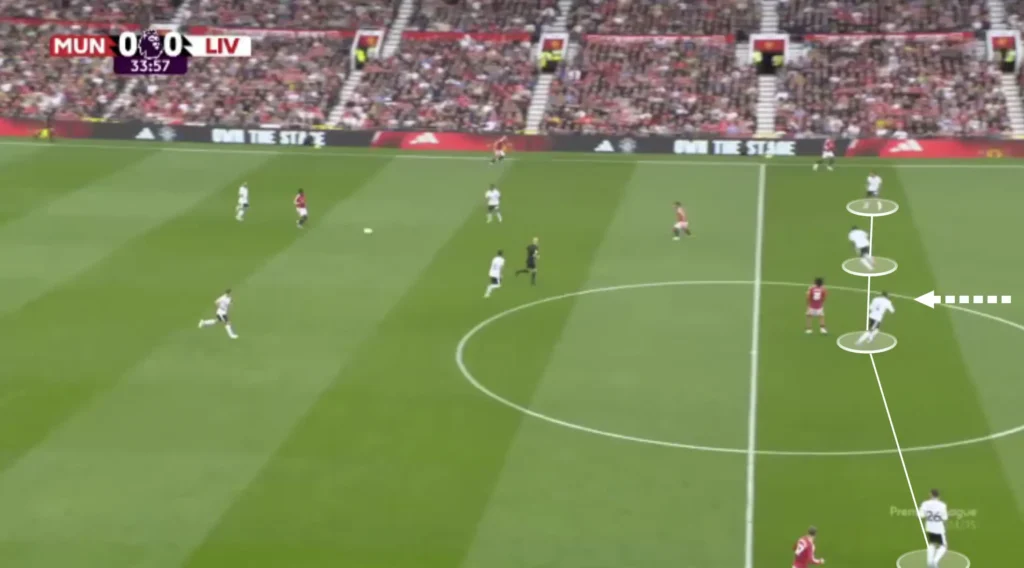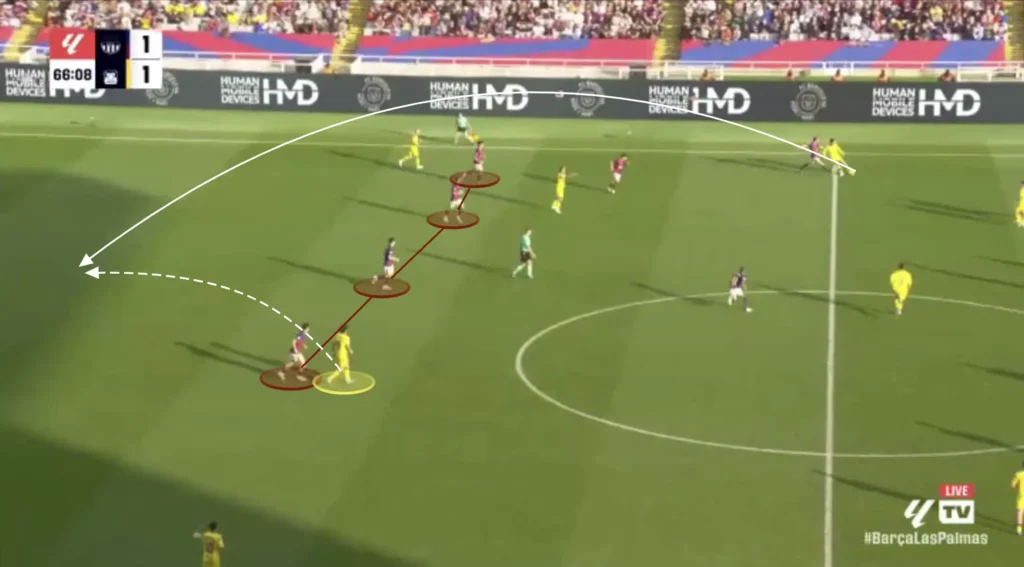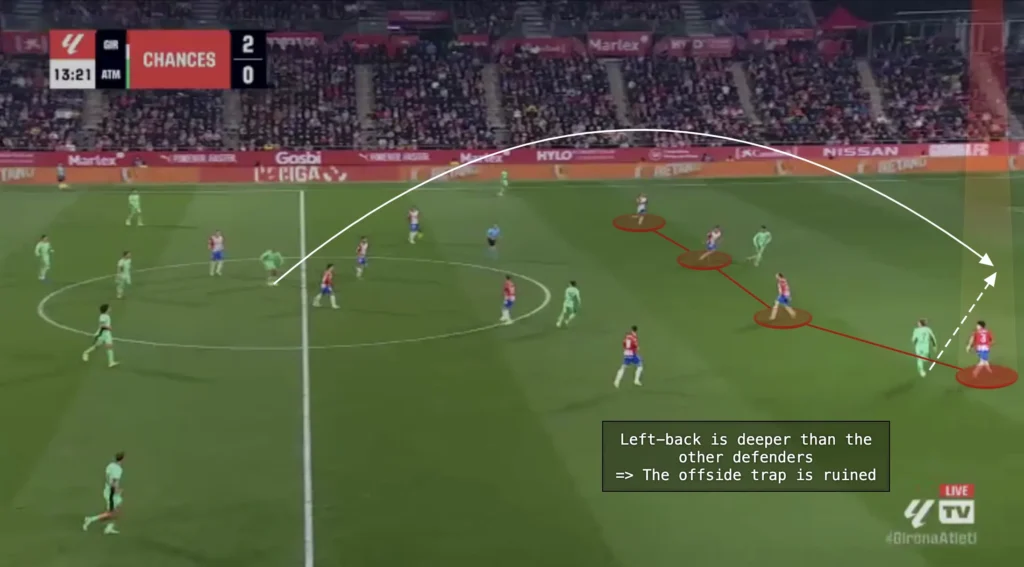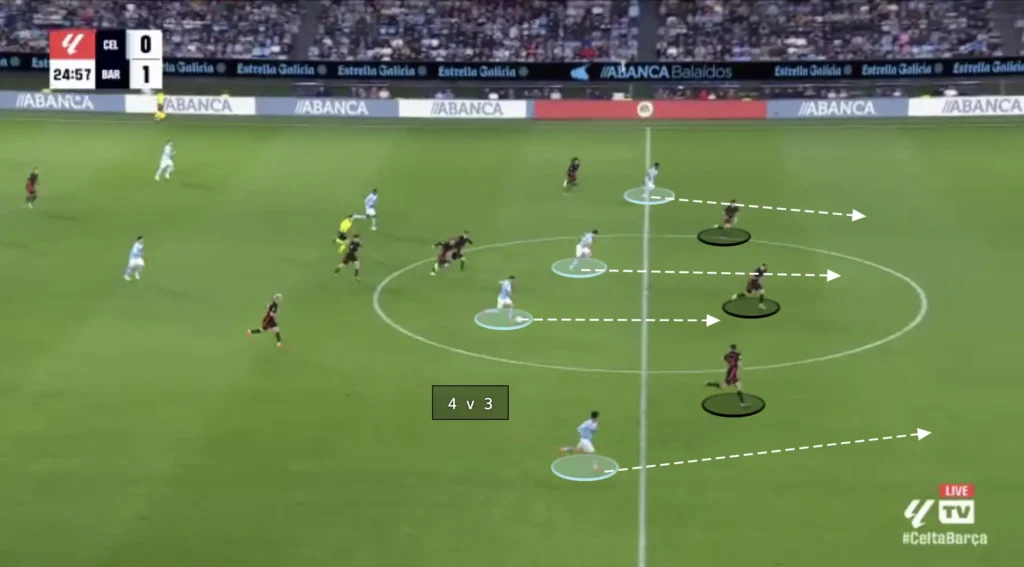In modern football, the concept of defending with a high backline has become synonymous with elite-level tactics. Teams like Manchester City under Pep Guardiola, Liverpool under Jürgen Klopp, and FC Barcelona under Hansi Flick have embraced this aggressive defensive strategy to control games and suffocate opponents. But what does defending with a high backline truly mean? How does it function in a tactical setup, and why do coaches rely on it despite the risks it entails?
This article dives into the mechanics, principles, and nuances of a high defensive line, exploring its benefits, risks, and the key ingredients for successful execution.
What is a High Backline?
A high backline refers to a defensive strategy where the back four or five positions themselves much closer to the halfway line rather than retreating deep toward the penalty area. This approach shortens the available space for opponents to work with, compressing the pitch vertically and forcing the opposition into tighter, more pressured areas.

This tactic is often paired with a high-pressing system, where the forwards and midfielders push up aggressively to win back possession as quickly as possible. It aims to suffocate the opposition’s ability to build up from the back, limiting their passing options and forcing errors.
Why Do Teams Use a High Backline?
Modern football values possession, space management, and quick transitions. A high backline plays a pivotal role in achieving these objectives:
- Compactness
By pushing the defensive line higher up the pitch, the team creates a smaller area for the opposition to operate. This reduces the space between the defense, midfield, and attack, making it easier to press and harder for the opposition to find passing lanes. - Proactive Defense
Defending with a high backline is not about sitting back and reacting; it’s about taking the game to the opponent. It allows defenders to step up and challenge attackers higher up the field, disrupting their rhythm and forcing mistakes. - Quick Ball Recovery
When paired with a high press, a high backline helps win the ball closer to the opponent’s goal. This creates opportunities for quick transitions and counterattacks, which are crucial in modern football. - Control of Possession
Teams that defend with a high line often dominate possession. By keeping the game in the opponent’s half, they minimize the risk of counterattacks and maintain sustained pressure.
Key Principles of Defending with a High Backline
For a high backline to work effectively, teams must adhere to specific tactical principles:
- Offside Trap
The high backline uses the offside rule as a defensive weapon. Defenders move in unison to step up at the right moment, catching attackers offside and breaking up opposition attacks. - Pace and Recovery
Speed is crucial. Defenders must be quick enough to recover if an attacker manages to break the offside trap or latch onto a through ball. - Positioning and Coordination
A high backline requires defenders to communicate constantly and move as a cohesive unit. Even a small lapse in positioning can leave dangerous gaps for the opposition to exploit. - Sweeper-Keeper
Goalkeepers play a vital role in this system, acting as a “sweeper” to clear long balls or through balls played behind the defensive line. This requires exceptional reading of the game and confidence playing off their line.
Risks of Defending with a High Backline
Despite its advantages, a high backline comes with inherent risks:
Vulnerability to Long Balls
Opponents can exploit the space behind the defensive line with long passes or fast forwards making well-timed runs.

High Margins for Error
A poorly executed offside trap or lack of coordination can result in the defense being split wide open.

Counterattack Exposure
If the high press is bypassed, the team is left vulnerable to quick counterattacks, with the defense scrambling to recover.

Dependence on Fast Defenders
Slow defenders are often exposed in this system. If they cannot recover quickly, it can lead to one-on-one situations with the goalkeeper.
Coaching a High Backline
Implementing a high backline requires meticulous training:
- Positioning Drills
Defenders must practice moving as a unit, maintaining their shape, and stepping up at the right moments. - Recovery Runs
Speed and effort are vital when recovering to defend against through balls or counterattacks. - Offside Trap Practice
Teams must work on timing their step-ups to catch attackers offside consistently. - Goalkeeper Sweeping
Goalkeepers should train to anticipate danger and clear balls played behind the defensive line.
Conclusion
Defending with a high backline is one of football’s boldest and most effective tactics, but it’s not without its challenges. It requires a combination of disciplined defenders, a proactive goalkeeper, and constant communication to execute flawlessly. While the risks are significant, the rewards are game-changing, allowing teams to dominate possession, suffocate opposition attacks, and create quick transitions into offense.
This tactic reflects the modern trend of proactive, high-intensity football, where defense and attack are deeply intertwined. For teams and coaches who can master its nuances, the high backline remains a powerful tool to control games and achieve success on the pitch.
